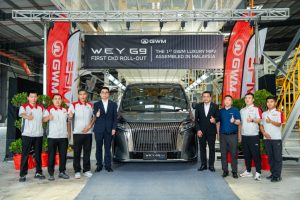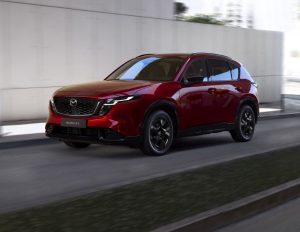Call it good timing or luck.
Porsche in Malaysia managed to show off the Taycan and its capabilities in Sepang before the country slipped back into the third movement control order.
For the local motoring media, it was also the first time they had laid hands on Porsche’s first modern all-electric sports car in a track setting since its arrival last September.
All four variants were there — the base Taycan, 4S, Turbo and Turbo S.

A few weeks before the April track day, we had the chance to try out a baby blue 4S on public roads and were impressed with its agility, traction and handling.
Sure, we have all heard about the characteristic silence, instant torque and rapid acceleration that electric cars can achieve. But it takes driving them to truly appreciate their breath of talent — and the fact they are a signpost to the future of mobility.
The 5-seat Taycan is not just any regular electric car; it’s an electric sports car, and so has to live up to the pressure of “repeatable performance.” Right up until the juice runs out.
Prices start from RM585,000 for the base Taycan and almost double to RM1.15mil for the range-topping Turbo S. In between are the RM700,000 4S and RM964,000 Turbo.

As you move up the hierarchy, the Taycan gets more powerful, faster and better equipped, with real-world range reported at over 400km to 460km.
Range is affected by driving behaviour, in-car settings and ambient temperature.
Only the base Taycan is rear-wheel driven; the rest are dual motored for all-wheel drive.
The rear motor is paired with a two-speed transmission to enable improved acceleration and range.
Also the Taycan and 4S have a 79.2kWh Li-ion battery pack that can be upgraded to the 93.4-kWh pack called Performance Battery Plus (PBP) but that is a sub-RM40K option.
The Turbo and Turbo S come standard with the 93.4-kWh pack.

As for powertrain, the Taycan/4S/Turbo/Turbo S quartet have up to 402hp/523hp/670hp/750hp respectively with 0-100kph sprint times of 5.4s/4.0s/3.2s/2.8s.
The Taycan get 469hp and 4S 563hp if they are upgraded with PBP but sprint times are unchanged. Even with PBP, the output of the Taycan and 4S still lag their higher-spec siblings because they are fitted with a less powerful electric motor.
How the componentry were laid out were shown with a stripped-down life-size Taycan brought in from Germany.
The design of the PBP showed the main battery taking up half the floor space in front and a smaller add-on battery pack aft of the rear-passenger footwell.
The PBP allows the car to be charged with direct current, thus speeding up the process significantly. The Taycan can gain a 100km range in just over five minutes of charging.

The charging time from 5% to 80% is 22.5 minutes in ideal conditions at 800-volt high-power charging stations, with a maximum charging capacity of 270kW.
What stuck in the mind was the drag race and the three laps afforded each person.
The former tested straight-line performance while the circuit drive gave a lay of the car’s driving dynamics.
In the drag race, a 4S was pitted against a Turbo.
A Porsche spokesman said the Turbo S was simply “too brutal” for the exercise.

Frankly, the 4S and Turbo are already very potent machines. Over a stretch of some 200 metres, the duo were raced in Normal, Sport and Sport Plus and finally Launch Control modes.
Typical of electric cars, the torque was instant and pleasurable with incremental pace between Sport and Sport Plus in both cars.
With the Turbo having the power advantage, it was to be expected that it would outpace the 4S at every turn.
Come Launch Control time, both cars evoked a pinned-in-the-seat sensation and left this writer feeling light-headed from the volcanic take-off and hedonistic speed; the feeling was much more intense in the Turbo.
Lapping the Sepang circuit in the 4S proved that the switch to electric propulsion has not dented Porsche’s reputation as a purveyor of fine sports cars.

The Taycan has a lower centre of gravity than a 911. With a drag coefficient of 0.22, it is the most aerodynamic car from Porsche and that helps in going fast despite the heavy battery in the floor.
The 4S drives really well. Steering is sharp with good feedback.
It’s supercar quick despite its hefty proportions.
It takes a lot to get the tyres to lose adhesion, all the better to swing fast into corners almost flat with laudable mid-corner balance.

As the battery charge dipped below 50%, the 4S didn’t slack off in performance, still coming on strong as it set a blistering pace on the next lap.
To add emotion to the drive, Porsche has amplified the whine of the motors during acceleration but it can be switched off if needed.
The Taycan shows a working model of an automobile that can be green yet appeal to even the hardcore car enthusiasts albeit at a stiff price.

The entry-level Taycan is the only variant that's rear-wheel driven.






















































